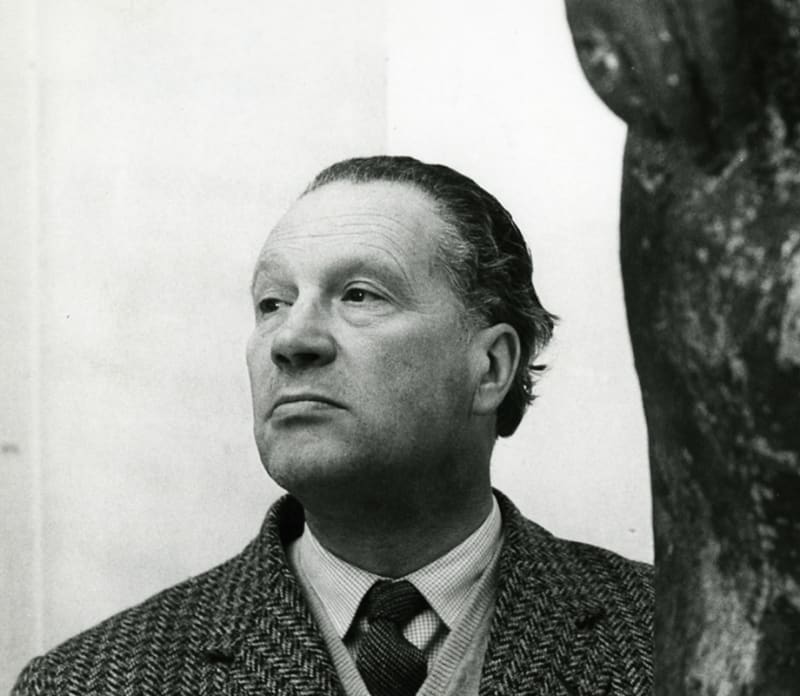MARINO MARINI Italian, 1901-1980
„My equestrian figures are symbols of the anguish that I feel when I survey contemporary events. Little by little, my horses become more restless; their riders less and less able to control them. Man and beast are both overcome by a catastrophe similar to those that struck Sodom and Pompeii. So I am trying to illustrate the last stages of the disintegration of a myth, I mean the myth of the individual victorious hero, the 'uono di virtù' of the humanists..“
Marino Marini was an Italian artist best known for his figurative equestrian sculptures. Throughout his life, he would return to the theme of a horse and rider with his arms stretched out to either side, as exemplified in his seminal work The Angel of the City (1948). He is also noted for his expressive busts featuring forlorn and abstracted faces, as well as paintings depicting his recurring horse-riding figure. Born on February 27, 1901 in Pistoia, Italy, he went on to study painting at the Accademia di Belle Arti in Florence, but turned to sculpture soon after graduating. In 1936, he received the Prize of the Quadriennale of Rome and his work was included in group survey of Italian art at The Museum of Modern Art in New York. Marino was later given a solo exhibition by Curt Valentin Gallery in 1950, where the artist befriended Alexander Calder and Jean Arp. Marini died on August 6, 1980 in Viareggio, Italy, and the Marino Marini Museum dedicated to his oeuvre opened in Florence in 1988.




